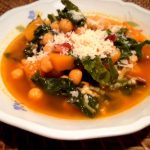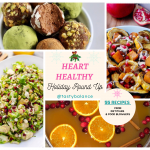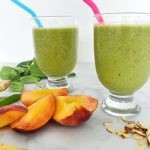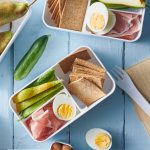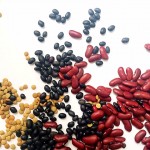 Did you know that 2016 is the International Year of the Pulse according to the United Nations? What is a pulse you ask? They are beans, peas, chickpeas and lentils and they are some of the healthiest foods on this planet. They contain fiber, protein, vitamins, minerals, are super inexpensive and sustainable for the earth to produce. I consider them to be one of the most superb foods you can find at the grocery store. Did I mention they’re very kind to your wallet ?? They truly are an everyday superfood.
Did you know that 2016 is the International Year of the Pulse according to the United Nations? What is a pulse you ask? They are beans, peas, chickpeas and lentils and they are some of the healthiest foods on this planet. They contain fiber, protein, vitamins, minerals, are super inexpensive and sustainable for the earth to produce. I consider them to be one of the most superb foods you can find at the grocery store. Did I mention they’re very kind to your wallet ?? They truly are an everyday superfood.
In a perfect world, I would cook all of my own beans starting from the dried form, but alas, this world is not perfect. Canned beans can make healthy cooking so much easier and convenient! I’m not always organized and I don’t always make a list of what I want to cook a week in advance. Sometimes when I crave soup, it happens on a whim and I don’t want to spend hours simmering the soup to soften the dried beans. Here’s where canned beans come to the rescue!
Canned beans can contain quite a bit of sodium. I’ve seen canned beans with 800 mg of sodium per cup! To make that number go down, you can do a couple things when purchasing canned beans:
1.Look for labels that say “Reduced Sodium”, “Low Sodium”, or “No Salt Added”
-Reduced sodium means the product has at least 25% less sodium than the original product.
-Low sodium means that the product has less than 140mg of sodium per serving.
-No salt added means that salt was not added during processing, but the product could still contain some sodium. Most of the time, the no-salt added beans aren’t the cheapest option, but if you’re on a low sodium diet, this is the convenience option I would choose. Eden Foods makes a line of no salt added beans.
2. Drain AND Rinse the beans
-Researchers Jones and Mount from the University of Tennessee found that by draining AND rinsing beans, the sodium can be reduced by up to 41%! Be sure to drain beans in a colander for 2 minutes, rinse under running water for at least 10 seconds, and then drain a final time for 2 minutes.
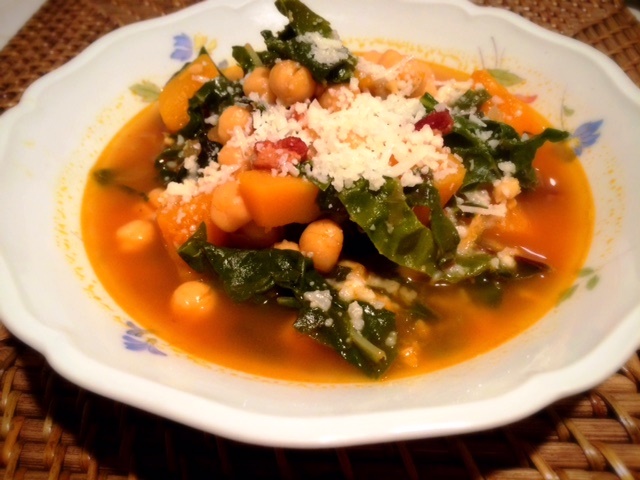
Smoky Butternut Squash, Chard and Chickpea Soup
Don’t forget to drain AND rinse your canned beans. Completing those two steps can reduce sodium by up to 41% ! Or use no salt added chickpeas from brands like Eden Foods.
To make this soup vegan, remove the bacon and sub with olive oil, use veggie broth in place of chicken broth and omit the pecorino-romano.
- Yield: About 4 quarts 1x
Ingredients
- 2 slices of bacon (about 1/2 ounce), chopped into 1/2″ pieces
- 1/2 medium onion, diced (about 1 cup )
- 1 tsp minced garlic
- 1–1/2 tsp fresh thyme leaves, coarsely chopped
- 1 tsp spanish smoked paprika
- 1 tsp kosher salt
- 1–1/2 lbs butternut squash, peeled, seeded and cut into approximately 1″ cubes
- 1 large bunch chard, ribs and stems removed, leaves cut into approximately 1″ thick ribbons
- Two 15.5 oz cans low sodium or reduced sodium chickpeas, drained and rinsed
- 32 fl oz low sodium chicken broth
- 2 tsp lemon juice, plus more to taste
- Grated Pecorino-Romano cheese for garnish, about 1 tsp per serving
Instructions
- Place a soup pot, at least 4-1/2 quarts in size, on the stove over medium heat. Add the chopped bacon and cook until the fat has rendered and the bacon is crisp. Remove the bacon pieces to a paper towel to drain the fat. Pour the bacon fat out of the soup pot into a small dish. Measure out 2 tsp of the bacon fat and put back into the soup pot.
- Add the chopped onion and garlic to the soup pot. Saute on medium heat until onion is soft, about 5 minutes. Add the smoked paprika, salt and thyme. Stir to coat the onions well. Add the butternut squash and stir to coat with the spices.
- Add the chard, chickpeas, and chicken stock to the pot.
- On high heat, bring soup up to a boil, then turn heat down to low and simmer until butternut squash is tender, about 20 minutes.
- Add the 2 tsp of lemon juice. If necessary add more lemon and/or salt.
- Ladle soup into bowls and top with cheese.
Keywords: soup, bacon, chickpeas, garbanzo beans, gluten free, nut free


